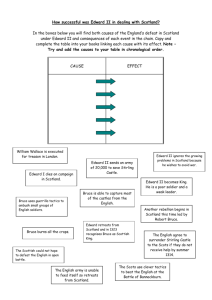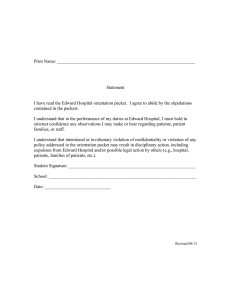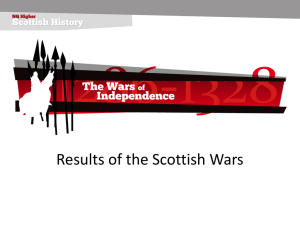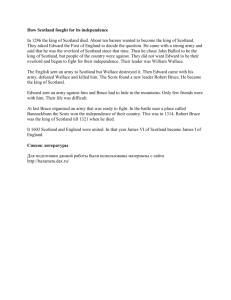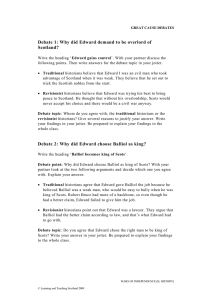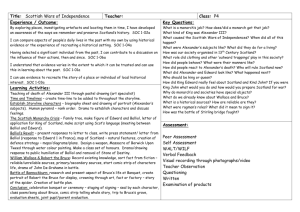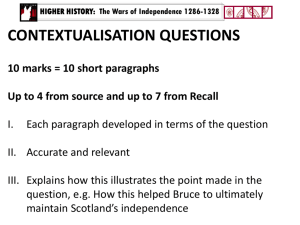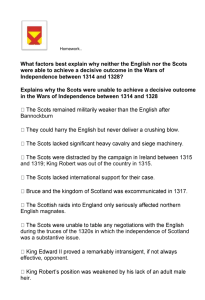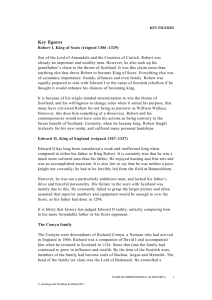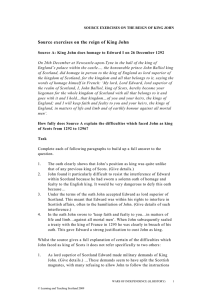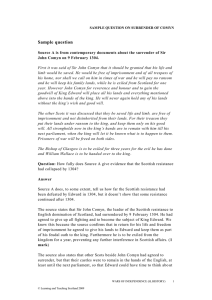Key figures
advertisement
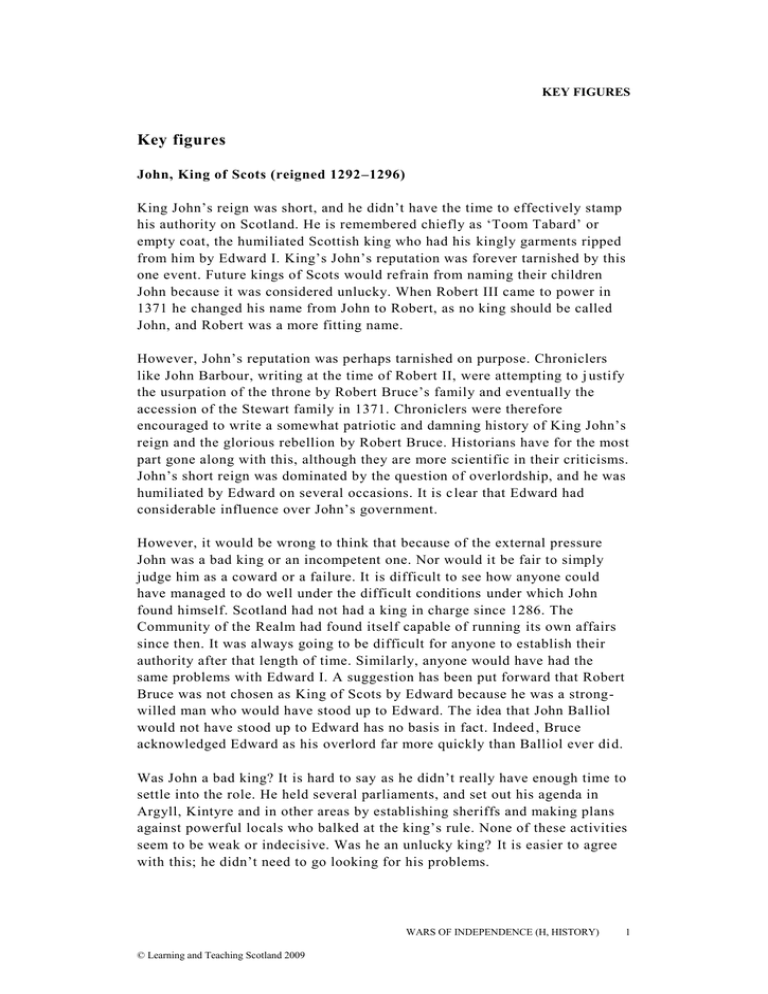
KEY FIGURES Key figures John, King of Scots (reigned 1292–1296) King John’s reign was short, and he didn’t have the time to effectively stamp his authority on Scotland. He is remembered chiefly as ‘Toom Tabard’ or empty coat, the humiliated Scottish king who had his kingly garments ripped from him by Edward I. King’s John’s reputation was forever tarnished by this one event. Future kings of Scots would refrain from naming their children John because it was considered unlucky. When Robert III came to power in 1371 he changed his name from John to Robert, as no king should be called John, and Robert was a more fitting name. However, John’s reputation was perhaps tarnished on purpose. Chroniclers like John Barbour, writing at the time of Robert II, were attempting to j ustify the usurpation of the throne by Robert Bruce’s family and eventually the accession of the Stewart family in 1371. Chroniclers were therefore encouraged to write a somewhat patriotic and damning history of King John’s reign and the glorious rebellion by Robert Bruce. Historians have for the most part gone along with this, although they are more scientific in their criticisms. John’s short reign was dominated by the question of overlordship, and he was humiliated by Edward on several occasions. It is c lear that Edward had considerable influence over John’s government. However, it would be wrong to think that because of the external pressure John was a bad king or an incompetent one. Nor would it be fair to simply judge him as a coward or a failure. It is difficult to see how anyone could have managed to do well under the difficult conditions under which John found himself. Scotland had not had a king in charge since 1286. The Community of the Realm had found itself capable of running its own affairs since then. It was always going to be difficult for anyone to establish their authority after that length of time. Similarly, anyone would have had the same problems with Edward I. A suggestion has been put forward that Robert Bruce was not chosen as King of Scots by Edward because he was a strongwilled man who would have stood up to Edward. The idea that John Balliol would not have stood up to Edward has no basis in fact. Indeed , Bruce acknowledged Edward as his overlord far more quickly than Balliol ever di d. Was John a bad king? It is hard to say as he didn’t really have enough time to settle into the role. He held several parliaments, and set out his agenda in Argyll, Kintyre and in other areas by establishing sheriffs and making plans against powerful locals who balked at the king’s rule. None of these activities seem to be weak or indecisive. Was he an unlucky king? It is easier to agree with this; he didn’t need to go looking for his problems. WARS OF INDEPENDENCE (H, HISTORY) © Learning and Teaching Scotland 2009 1 KEY FIGURES At a parliament held in Stirling in early July 1295, it wa s agreed that a Council of Twelve would be named in order to govern alongside or instead of King John. They were four earls, four barons and four bishops. The Earl of Surrey John de Warenne, the Earl of Surrey, was a close friend of Edward, having fought with him during the wars in Wales, and having accompanied him to Spain to collect his bride. He was in charge of the English vanguard that fought the Scots at the Battle of Dunbar. His quick thinking and highly manoeuverable force outwitted the Scots and won a tremendous battle. His reward was to be named ‘warden of the kingdom and land of Scotland’, Edward’s chief lieutenant in the north. However, Warenne was tiring of the life of constant campaigning and often complained about his health. He did not stay long in Scotland; he blamed the inclement weather for his poor condition and returned to his estates in England. He was slow to deal with the rebellions in 1297, and allowed his second -incommand, the Treasurer of Scotland, Hugh Cressingham much leeway i n handling the affairs of the kingdom. Eventually he was forced to return to Scotland because of Wallace and Murray’s rebellion. As a result of his poor leadership and bad choices he lost the Battle of Stirling Bridge, and was forced to retreat to Berwick in 1297. Despite this, it would seem that Edward continued to show him favour. He led the recapture of Roxburgh and Berwick in 1298 and was one of the field commanders at the Battle of Falkirk. 2 WARS OF INDEPENDENCE (H, HISTORY) © Learning and Teaching Scotland 2009
